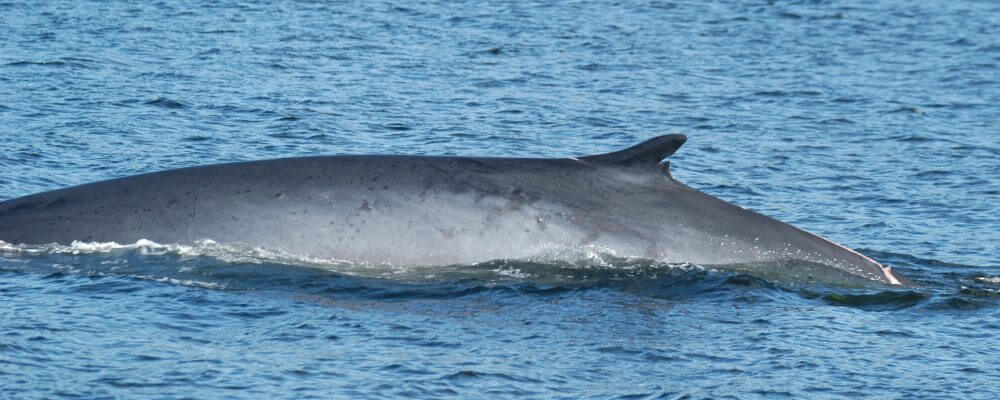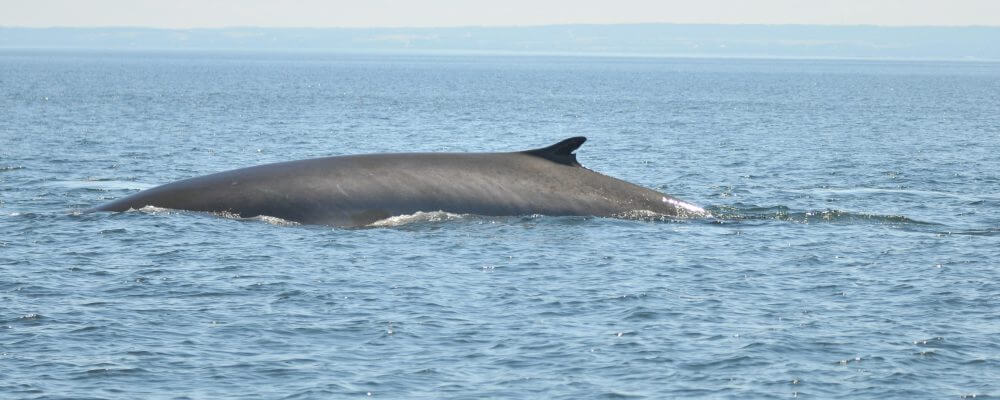Newkie Brown
Fin Whale


-
ID number
Bp068
-
Sex
Unknown
-
Year of birth
Unknown
-
Known Since
1991
Observations history in the Estuary
Years in which the animal was not observed Years in which the animal was observed
Latest news from the publications Portrait de baleines
Newkie Brown was present in the Marine Park this year at the end of June, having been identified by the GREMM team on the 24th. After a very brief visit, this fin whale might show up again in September, so keep your eyes peeled! Over the years, the team has noticed that its pattern of forays into the Marine Park is variable. Newkie Brown, generally one of the first fin whales of the season, spends two to six weeks in the Estuary. In 2008 and 2009, after a one-week stay in early summer, it disappeared and reappeared in September.
Its dorsal fin changed in 2003, taking the shape of a beer bottle opener. In 2004, Newkie Brown showed fresh injuries on its peduncle caused by entanglement in fishing gear; to this day it still bears a white scar.
In 1905, a hunting station under Norwegian control was established in the village of Sept-Îles and contributed to the vitality of the community. The factory employed some forty men from the region and 20 or so Scandinavians. They hunted blue and fin whales, harvesting some 70 to 85 a year.
In Canada, the conservation status of the North Atlantic fin whale is “Special Concern”. According to global data of the International Union for Conservation of Nature’s (IUCN) Red List of Threatened Species, the fin whale is “Endangered”. Between 1929 and 2007, i.e. three generations (fin whales having a life expectancy of nearly 100 years), its population fell by 70%.
After a 20-year hiatus, Iceland resumed commercial whaling of the fin whale in 2003. Since 2003 the country has harvested 280 individuals, selling the meat to Japan, which struggles to market it due to a lack of buyers. Iceland objects to the international moratorium on commercial hunting imposed by the International Whaling Commission in 1986.
One year after implementation of the moratorium, Japan, an IWC member, initiated a whaling program for “scientific purposes” (JARPA II), which calls for the capture of 50 fin whales a year in the Antarctic. The International Court of Justice has pressed Japan to end this hunt. The country has declared that it wishes to resume whaling in 2015 using new methods, reduced harvests, and targeting only minke whales.
In Greenland (a Danish territory), coastal communities, with a view to maintaining their traditional way of life, practise subsistence hunting with an annual quota of nine fin whales.




